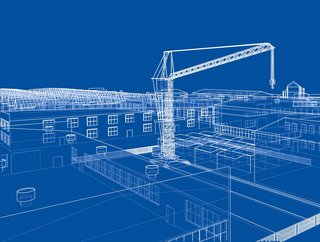Feature: How artificial intelligence supports the construction industry

The construction industry is welcoming a new helping hand: artificial intelligence. As the years go by, more and more advanced forms of technology are making their way into our workplaces, offering a wealth of efficiency and information at the blink of an eye.
Machines are now capable of displaying their own sense of intelligence by gathering data, processing, and concluding based on that data. Such a process is invaluable for construction, as it allows for a degree of prediction based on the information the artificial intelligence provides.
Looking in further detail at how artificial intelligence is improving and supporting the construction sector, Oasys, a provider of retaining wall solutions, investigates:
The four key categories of artificial intelligence in the construction industry are as follows.
Planning stages
Artificial intelligence lends a helping hand to the process of construction plan creation. Autonomous equipment is considered as AI as it is aware of its surroundings and is capable of navigation without human input. In the planning stages, AI machinery can survey a proposed construction site and gather enough information to create 3D maps, blueprints and construction plans.
See also:
- Fortive agrees $775mn deal for construction cost data and software firm Gordian
- US Army patents 3D printing solution for military-strength building construction
- Bentley Systems acquires London 4D construction modelling firm Synchro Software
Thanks to artificial intelligence, a process which once took weeks to complete now takes just a day. This helps to save firms both time and money in the form of labour.
Office work
Artificial intelligence is also an asset in the office. For example, workers can input sick days, vacancies and sudden departures into a data system and it will adapt the project accordingly. The AI will understand that the task must be moved to another employee and will do so on its own accord.
Construction underway
Thanks to a wealth of information at its beck and call, artificial intelligence can keep engineers up-to-date on the best methods to utilise for projects. For example, if engineers were working on a proposed new bridge, AI systems would be able to advise and present a case for how the bridge should be constructed.
This is based on past projects over the last 50 years, as well as verifying pre-existing blueprints for the design and implementation stages of the project. By having this information to hand, engineers can make crucial decisions based on evidence that they may not have previously had at their disposal.
AI has also boosted the conditions of the worksite: autonomous site machinery allows the driver to stay outside of the vehicle as it works at dangerous heights. Using sensors and GPS, the vehicle can calculate the safest route.
After completion
Artificial intelligence is often woven into the building it helps to create and is used even after the project's completion from within the building. In the US alone, $1.5bn was invested in 2016 by companies looking to capitalise on this growing market.
By the end of 2017, for example, Wyn hotels saw an Amazon Echo installed in each of the rooms in its Las Vega hotel. These devices can be used for aspects of the room such as lighting, temperature and any audio-visual equipment contained in the room.
These systems can also be used within domestic settings, allowing homeowners to control aspects of their home through voice commands and systems that control all electronic components from one device.
BIM and VA
BIM (building information modelling) is a fantastic development in artificial intelligence that allows for the construction process, planning, key decisions, and historical data on a building to be recorded all the way up to its demolition.
VA (a virtual assistant) can be used to add a more conversational nature to the information BIM provides. By combining VAs alongside NFC (near-field communication), VAs can be given additional information to the building itself in real-time from various sensors in the building. For example, if there were structural problems with a building, then VAs could inform engineers specifically where the problem was and how it can be fixed.
The integration of VAs and AIs working seamlessly with engineers allows companies to save money and time. AIs can also help to replace redundant labour to allow for the industry to make efficiency savings that weren’t possible before this type of technology existed.
As the future of AI becomes more of a reality within construction, only time will tell how reliant upon intelligent machines we will have to be in order to construct innovative building designs.
Article supplied by Oasys






